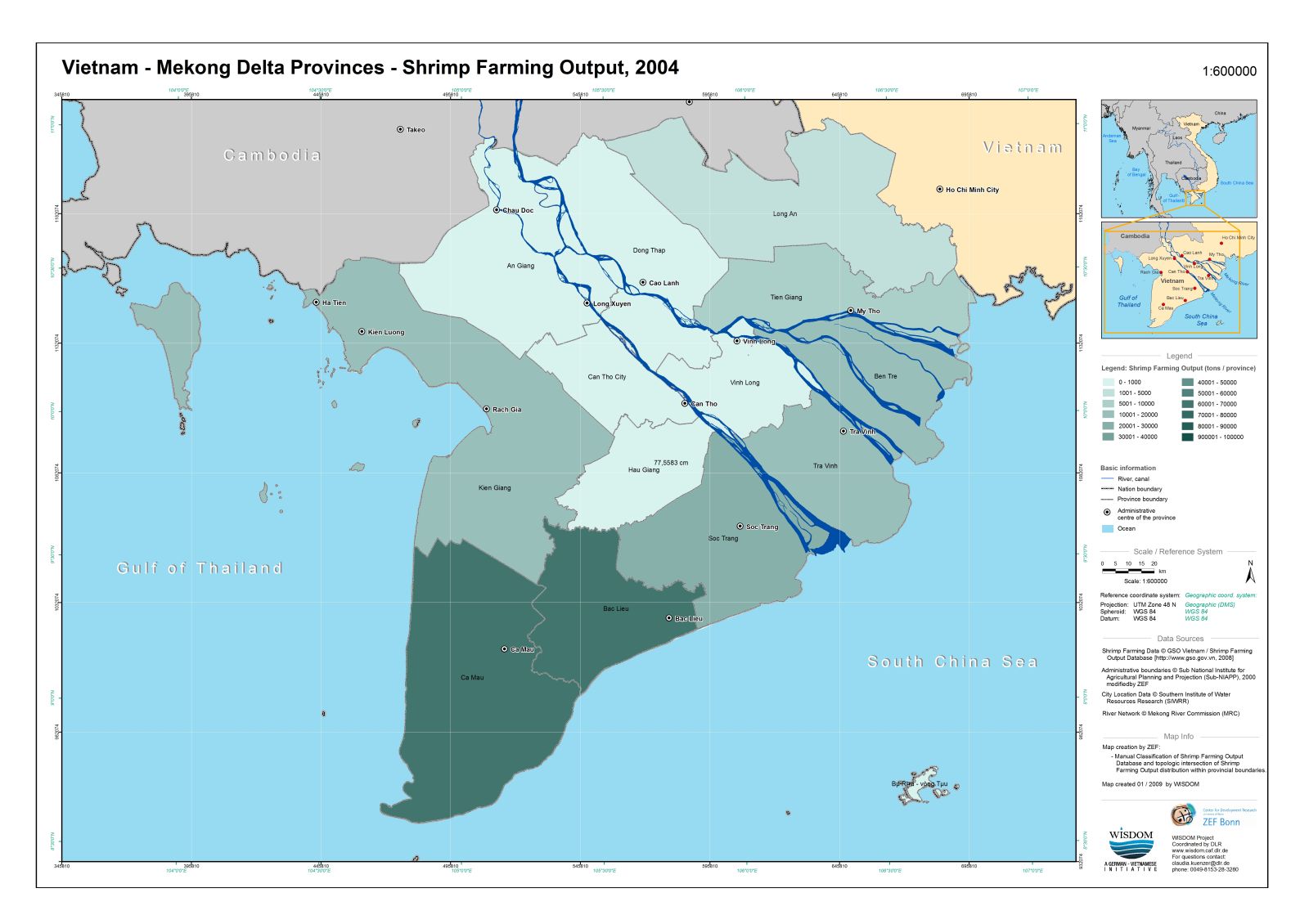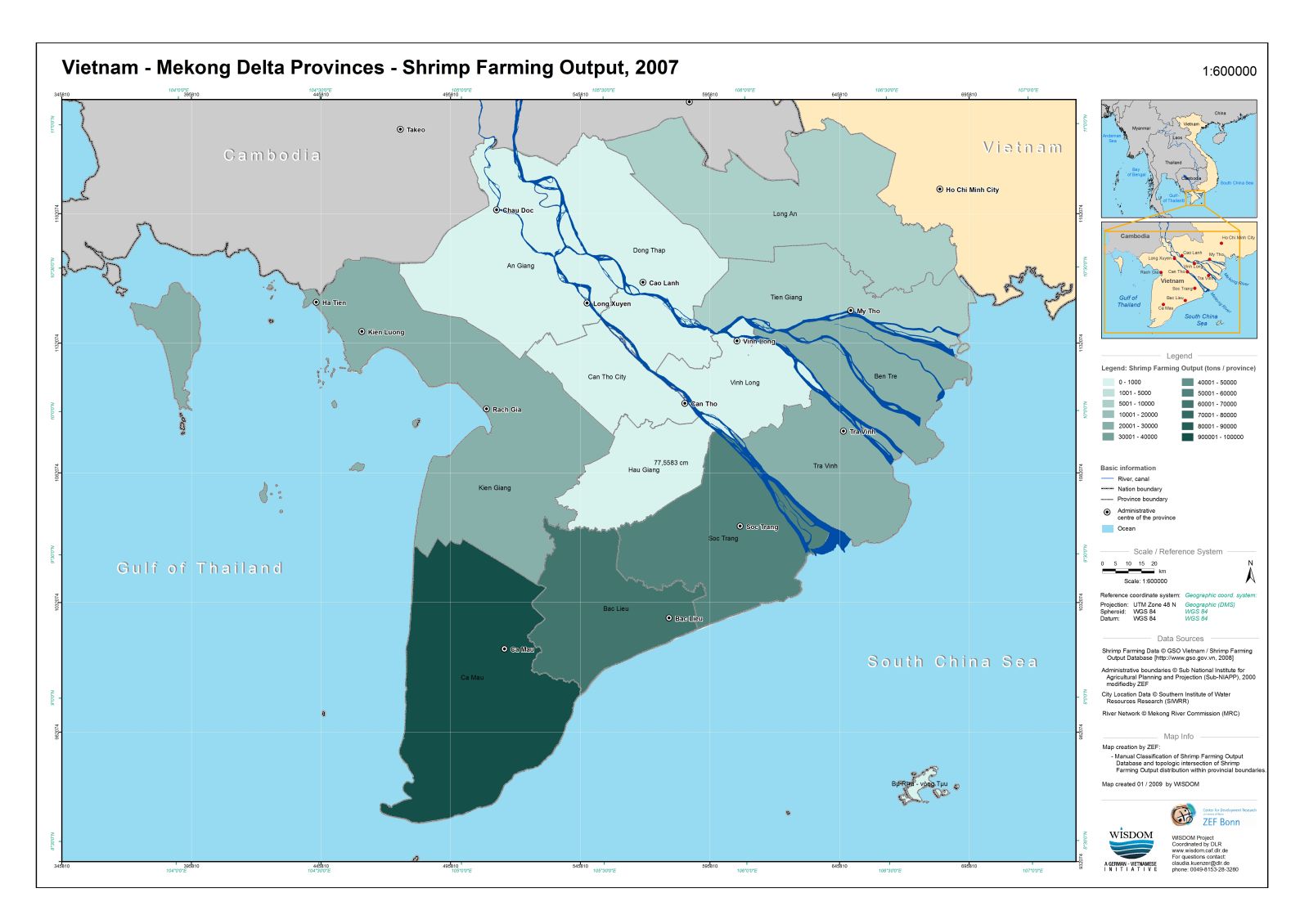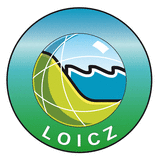Mekong Delta – Shrimp Farming Output, 2004 & 2007
During recent years shrimp farming and processing has become an important economic sector in the Mekong Delta, in particular in coastal areas of the delta. In 2006, the Mekong Delta’s shrimp production accounted for 81 percent of the total national output (Mekong Delta: 315 thousand tons). Between 2004 and 2007 shrimp farming in the Mekong Delta experienced a significant growth of about 41 percent in terms of output. The majority of shrimps farmed and processed in the Mekong Delta are exported to markets abroad such as the EU, Japan and the US.

Figure 1: Mekong Delta – Shrimp Farming Output, 2004. Scale: 1:600.000

Figure 2: Mekong Delta – Shrimp Farming Output, 2007. Scale: 1:600.000
GIS: Reference coordination system: Projection UTM 48 N; Datum WGS 84
The maps illustrate the annual output from shrimp farming at the province level within the Mekong Delta.
The most important map attributes such as class values and reference scale are tabulated in the map frame.
Since shrimp farming needs special natural conditions such as brackish water, today’s major production centers of the delta are to be found in the coastal areas, forming a belt around the freshwater zone. Nowadays, the regional centers for shrimp farming are located within the provinces of Ca Mau, Bac Lieu and Soc Trang in the southwest, which alone account for 65 percent of the delta’s output of shrimps, and 53 percent of Vietnam’s entire output. Likewise, with annual growth rates of more than 20 percent provinces such as Tra Vinh and Kien Giang are on the rush to catch up with their neighbors.
Shrimp farming has brought new income opportunities and some wealth to many people in the delta, however, ecological and environmental consequences weigh heavily due to loss of mangrove forests and water pollution. Theses ecological problems urgently call for solutions to achieve more sustainability in this sector.




